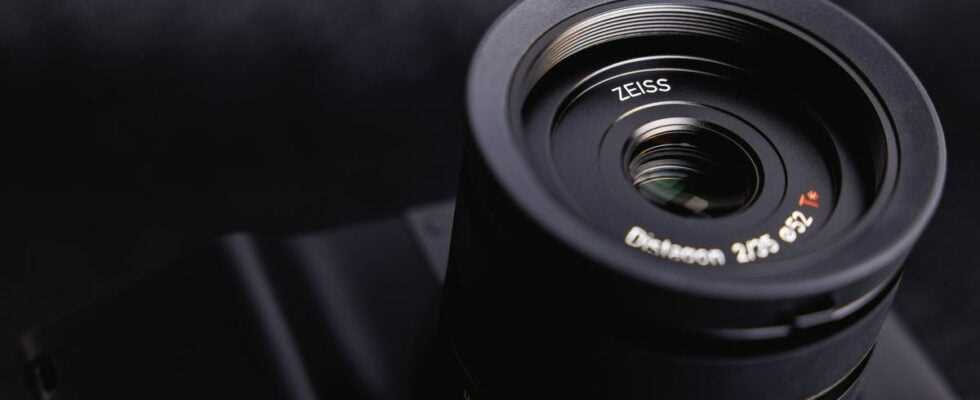5
Presented with great fanfare in 2018 by Zeiss, the expert compact ZX1 is intriguing in more ways than one. Before publishing its full test, let’s analyze the integrated optical quality, the Distagon T* 35mm f/2.
Zeiss ZX1
Introductory price 4990 €
On the occasion of Photokina 2018, which was the last European gathering of this scale, Zeiss unveiled the ZX1. Directly classified in the category of expert compacts thanks to its large 24×36 sensor, it also benefits from the Distagon T* 35mm f/2 lens. In addition to a worked design which is reminiscent of the manufacturer’s range of Otus optics, the ZX1 stands out above all for its operating system based on Android.
An ambitious device
Thanks to him, Zeiss has directly integrated a version of Lightroom which allows the camera to be used as an editing and sharing station. In this way, it is possible to do without your smartphone or computer. In the often very conservative world of photography, Zeiss thus threw a stone into the pond.
© Guillaume du Mesgnil d’Engente / Digital
Faced with what constitutes a real bias of the German manufacturer, we were eager to test the ZX1 to check if the box is positioned as a good communication operation or as a box worthy of its price. Available from €4990, it is unfortunately only marketed in Europe in Germany and the United Kingdom.
Before the publication of our complete analysis on ergonomics, construction, autofocus or even the video part, let’s focus on the optical quality of the Distagon T* 35mm f/2 which equips the ZX1. Scheduled to cash the 37.4 effective megapixels of the 24×36 sensor, we expect the German optician to turn on this point.
© Guillaume du Mesgnil d’Engente / Digital
Sharpness
The best quality is obtained at f/4.
If we expected a good performance from Zeiss, the specialist surprises us with a fixed focal length with a quality worthy of the best modern hybrids. Best of all, the larger aperture at f/2 is usable without worry, even if the corners are set far back.
At f/2.8, the quality improves slightly, but it is especially from f/4 that the lens reveals its full potential. If the quality drops afterwards, it is entirely possible to use the ZX1 up to f/11 without ulterior motives. Diffraction appears clearly from f/16, but we do not recommend using the f/22 aperture if image quality is a priority.
Unfortunately, human error prevents us from offering you the extract at f/2.8.
Distortions and chromatic aberrations
On the other hand, distortions are almost non-existent. No particular use will be excluded by any deformation. In the same vein, the presence of lateral chromatic aberration is very reduced and does not constitute a problem within the framework of a traditional use.
Vignetting
On the side of vignetting, the ZX1 corrects the phenomenon very well on its internally generated jpegs. Light loss is almost negligible most of the time. However, care should be taken when using the raw files. The internal correction is then deactivated and the photographer will have to correct the darkening of the corners himself, if the heart tells him. The loss is quite noticeable, with -1 EV, while the vignetting really never disappears, even when closing the diaphragm by two stops.
At f/2, vignetting causes 1 EV to be lost.
bokeh
Finally, let’s talk about the bokeh offered by the ZX1. If the Distagon T* 35mm f/2 is not necessarily suitable for portraiture; since it is more on the wide-angle side, the maximum f/2 aperture associated with the large full-frame sensor makes it easy to pick up the subject from the background. The optical construction does not cause any major defect in its quality while the central diaphragm offers a very creamy background blur.
Of course, optical quality alone cannot sum up the ZX1’s image quality, but the performance on offer bodes well. Our traditional increase in sensitivity, just like handling, responsiveness or the video part still remains to be dissected in our test of the Zeiss ZX1 which is already well underway.
Zeiss ZX1: exceptional image quality in an intriguing body
Image Gallery
Jpegs taken out of the case
View EXIF © Guillaume du Mesgnil d’Engente / Digital
View EXIF © Guillaume du Mesgnil d’Engente / Digital
Edited raw files
View EXIF © Guillaume du Mesgnil d’Engente / Digital
View EXIF © Guillaume du Mesgnil d’Engente / Digital

